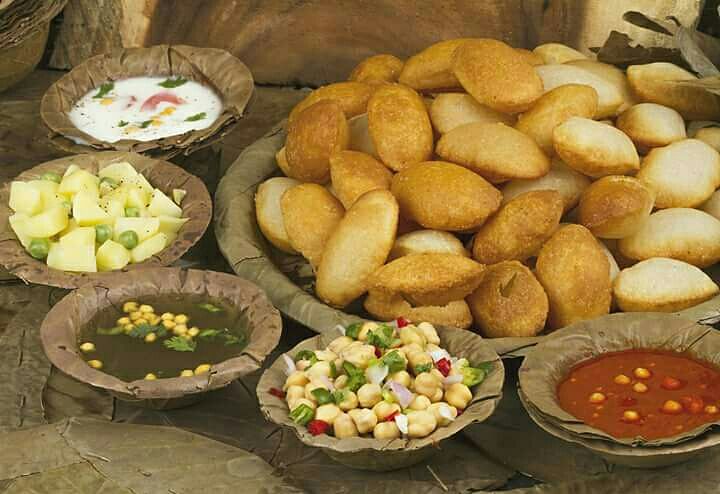Chaat is a word which every Indian practically loves. This is an array of essential street snacks of India, with a staple version invented in almost every state and district to cater to its growing demand. Some are these chaats are so unique that you wouldn't find them anywhere else except their place of its origin where they have been perfected over generations.
And some are universal; however, over years have evolved to suit taste buds of different cities and cultures. For e.g. {pictured} Gol Gappas {as called in North}, Paani Puri {as called in West} or Puchkas {as called in East and North-East}. The construct of the dish remains same i.e. filling the deep fried fluffed up bites with flavoured water/yoghurt along with other ingredients and condiments; ultimately garnished with herbs and digestive spices.
Chaat literally means to lick. We assume, that the multifold layers of complex flavours {sweet-spicy-tangy-savoury} packed in one dish gives chaats its true meaning. It's simply irresistible and it's a pity not to taste one when you are in India!
Now the big question, who exactly invented chaat? With many stories revolving around this concept, we narrowed down our trivia to the most interesting one. Apparently, chaat was created in the royal kitchen of Mughal emperor Shahjahan's palace. In those times as the water of the Yamuna {second largest tributary river of the Ganges in the North,} was not palatable and safe for drinking; the royal Hakim {emperor's special doctor} suggested changes in the regular diet of people in order to sustain a healthy lifestyle. Therefore, to kill the effects of water, very spicy and oily food was introduced. This marked the advent of chaat! No wonder why Old Delhi's chaat (also known as Shahjahanabad) rules the "to do" list of many visitors.
And some are universal; however, over years have evolved to suit taste buds of different cities and cultures. For e.g. {pictured} Gol Gappas {as called in North}, Paani Puri {as called in West} or Puchkas {as called in East and North-East}. The construct of the dish remains same i.e. filling the deep fried fluffed up bites with flavoured water/yoghurt along with other ingredients and condiments; ultimately garnished with herbs and digestive spices.
Chaat literally means to lick. We assume, that the multifold layers of complex flavours {sweet-spicy-tangy-savoury} packed in one dish gives chaats its true meaning. It's simply irresistible and it's a pity not to taste one when you are in India!
Now the big question, who exactly invented chaat? With many stories revolving around this concept, we narrowed down our trivia to the most interesting one. Apparently, chaat was created in the royal kitchen of Mughal emperor Shahjahan's palace. In those times as the water of the Yamuna {second largest tributary river of the Ganges in the North,} was not palatable and safe for drinking; the royal Hakim {emperor's special doctor} suggested changes in the regular diet of people in order to sustain a healthy lifestyle. Therefore, to kill the effects of water, very spicy and oily food was introduced. This marked the advent of chaat! No wonder why Old Delhi's chaat (also known as Shahjahanabad) rules the "to do" list of many visitors.

